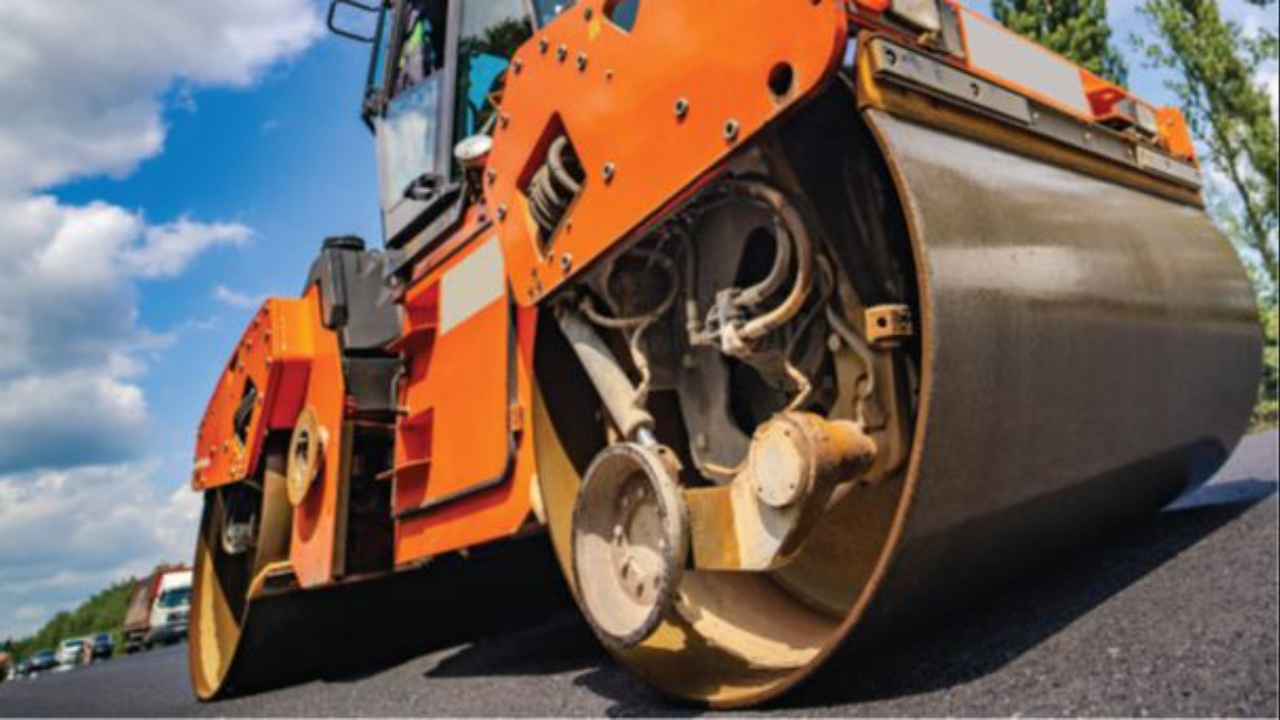Blog
Stay up to date with all the latest community association industry news. Subscribe to this blog and receive notifications of new posts by email here
Trees and Concrete

By Adrianne Bauer
This article fist appeared in The Communicator, Spring 2023 Edition.
There is no product more commonly used than concrete.
We can’t exist without trees providing this little thing called oxygen.
Therefore, trees and concrete exist in the same environment – sort of like cats and dogs. Trees continuously grow both up and out as they become older, changing their footprint. Concrete is a finite object that is most often damaged by trees. So, how do we make it all work?
DEVELOPERS – HOW COULD THEY DO THIS TO US?
During development, landscape architects and developers put together their brilliant plan to create a beautiful community, knowing that eventually there will be issues. Most developers/landscape architects install fast-growing trees in order for the property to sell quickly. Unfortunately for us, these fast-growing trees with fast-growing root systems create future issues that we find in almost all communities.
Once these trees reach a certain age, they use u...
Elevator 101 – Knowledge is Control

(First in a series) By Barry Robbins
This article fist appeared in The Communicator, Spring 2023 Edition.
Elevators remain a mystery to property owners and managers even after years of operation. Elevators are elaborate systems that require specialized knowledge and expertise to understand and maintain properly. Their mechanics involve electrical, mechanical, and hydraulic systems requiring regular inspection, maintenance, and repair.
These complex machines rely on various components to function properly. Each component has a specific role to play in the operation of the elevator; a failure in any one component can result in serious safety concerns. Understanding the different types of elevator components can help building owners and property managers to better manage and maintain their elevators and ensure the safety and well-being of building occupants. In the articles to come, we will provide an "Elevator 101" primary education of these various components such as:
Cab Component...
Are You Ready for the EV Revolution?

How to prepare for electric vehicle charger installations in common areas.
By Karen St. Onge, Esq
This article fist appeared in The Communicator, Spring 2023 Edition.
It has been more than a decade since the Davis-Stirling Act was amended to provide for the installation of electric vehicle charging stations (EV chargers) and time of use meters in common interest developments (CIDs). Despite this legislation, installation of EV chargers in common areas has remained a rare occurrence, and the courts have not issued any appellate decisions interpreting sections 4745 and 4745.1 of the Davis-Stirling Act.
Recently, millions of dollars in rebates have become available for installation of shared EV chargers. These rebates are from the state and federal government in partnership with nonprofit organizations to further promote EV charger installations. So, how can associations take advantage of this free money and be prepared to respond to owners’ requests to install EV chargers in common ...
Looking Beyond the Aesthetics

…and Putting Preventive Maintenance in Your Plan
By Wendy Benner Miller, CAM
This article fist appeared in The Communicator, Spring 2023 Edition.
Why is it that there is often a substantially greater demand, more community involvement, and increased interest in the timeline for new pool equipment or annual plantings in a common area space than a community-wide roof, balcony, or dry-rot inspection?
While that may seem like a silly question, it is often the one that gets the most attention when a problem arises and preventive maintenance is Beyond the Aesthetics Looking long past possible. You see, living in a common interest development often allows for residents to focus on the amenities that drew them to a homeowners’ association in the first place, be it the pool area, a clubhouse, a park or tot-lot, and, seemingly most often, the landscaping that is magically groomed by an outside source. The focus on these items, while important, often takes precedence over less exciting items...
Partnering for Success: 7 Tips for Working with a General Contractor

Guest Blog by Char Tedrick
This article fist appeared in The Communicator, Spring 2023 Edition.
Let’s face it – life is stressful. We can try every calming strategy in the book, practice meditation, breathwork, and yoga – but when you are responsible for the peace of mind and contentment of a large community of residents, we’re talking next level. You need to be prepared and ready to handle whatever the day brings.
When circumstances call for the services of a general contractor, chances are your needs are urgent and time is of the essence. When your community is depending on you for quick and reliable service and support, having those strong partnerships and vendor relationships in place is critical. You may have your nominated vendors and trusted partners, but you never know what the future may hold. It is always better to have options and the ability to make a calculated and thoughtful decision on work based off the bids of a few qualified contractors. Dig in here for some tips ...
Timing is Everything with Asphalt Projects

By Mary Peterson and Erin Clark
There's a time and a place for everything and that includes your next asphalt project. Asphalt projects can be the most disruptive and daunting experiences for any community; they take timing, coordination, and community participation. However, they’re necessary to maintain or replace a surface that is used by everyone in the community.
The timing of these projects is critical to a successful outcome, and they also take preparation and must be heavily coordinated to ensure membership participation. The process starts with a conversation and a specific need. Are you ready for a maintenance coat, repairs, or replacement? Once this is determined, it’s best to work backwards from the end of the third quarter of each year. With so many pre-project details, it’s important to start your projects with enough time to prepare before commencing.
Asphalt is a conglomeration of aggregates, binders, and fillers. What looks to most like a simple project on the surfa...
An Exciting Year Ahead for BayCen’s Legislative Support Committee

When it comes to new Sacramento legislation that has the potential of affecting our industry, it’s fair to say 2022 was not the busiest year. Nevertheless, our chapter’s Legislative Support Committee (LSC), which supports the mission of CAI’s California Legislative Action Committee (CLAC), has been busy planning several exciting events and fundraisers for 2023, as well as continuing to support CLAC in its ongoing work.
First up is a Virtual Town Hall, our "Getting Ready for Advocacy Week" planning meeting (April 11). Then comes the ever popular and always important "Advocacy Week" event itself (held virtually, April 24-27). During Advocacy Week, CLAC delegates, homeowners, and other industry professionals meet with legislators to discuss potential impacts of bills the Legislature is considering, as well as other issues and challenges currently affecting their communities. LSC will also help support CLAC in its ongoing "Buck-a-Door" campaign, in which associations agree to contribut...
Specialization, Automation, Outsourcing: 3 Steps to Protect Your Time

By Rob Buffington
As the labor market continues to be the single greatest difficulty of our industry, companies are exploring new ways to increase their Direct Labor Efficiency Ratio (DLER). This is traditionally achieved through one of three means: specialization, automation, or outsourcing. Specialization is the process of narrowing job duties so that each position is working on the same few tasks and thereby becoming more efficient at each. Automation refers to the use of software and processes to replace man hours with machine hours. Outsourcing can be delegating the position entirely, such as hiring a third-party accounting firm, or hiring remote workers from staffing agencies at a lower cost than domestic employees.
Specialization is one of the most important changes our industry needs to practice in order to advance. The portfolio mindset of 20 years ago still endures, with the property manager being responsible for all activities related to a property. The goal of specializat...
BIAS in Our Communities: Strategies for Creating Stronger Communities and Avoiding Liability

By Melissa Bauman Ward, Esq., CCAL
(Second in a two-part series)
In Part 1 of this article, we examined different kinds of bias and considered ways that we could recognize implicit and explicit bias in our communities generally and in the way we interact with each other. In Part 2, we consider specific areas of our written documents and governance procedures where bias may be found and look at ways to eliminate or avoid negative bias in these contexts.
OVERT RACISM: UNLAWFUL LANGUAGE IN CC&RS
Unfortunately, there are still many documents in use which contain explicitly racist restrictive covenants. These outdated, offensive restrictions often take the form of identifying racial groups that are prohibited from owning property, or even residing in a community. Obviously, such overt racism is a violation of federal and state law. Despite some progress being made around fair housing laws and practice, the issue of what to do with these odious documents remains.1 Encouragingly, in Cali...
Report from the Trenches: Best Practices for Representing Associations in Small Claims Court

By Karen St. Onge, Esq.
This article first appeared in our Fall 2022 Communicator Magazine.
Although attorneys advise homeowner associations and community managers in preparation for appearing in small claims court and assist with appeals, more often community managers and board members go it alone since the amount in controversy does not seem to warrant the expense. (CCP §116.530, 116.540, Civil Code §4100). Here is what senior community managers in the Bay Area and Central Valley had to say about their experiences in small claims court.
FIRST SIGNS YOU ARE HEADING TO SMALL CLAIMS COURT
According to a manager who has appeared hundreds of times in small claims court, the first sign that the association is going to get sued by a member of the association is a request for association records. The first thing she does is open a file and starts tracking everything that is requested and produced, in detail, and document every interaction with that member.
